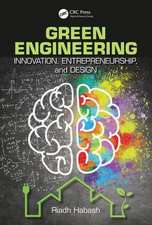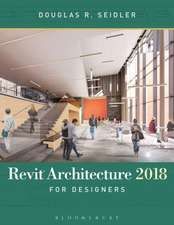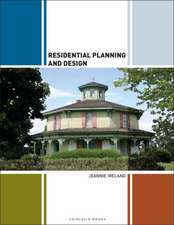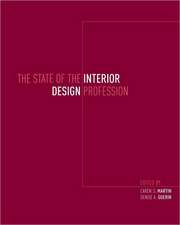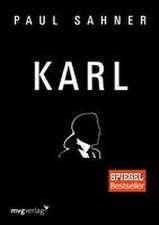Research-Based Programming for Interior Design
Autor Dr. Lily B. Robinsonen Limba Engleză Paperback – apr 2020
Preț: 409.21 lei
Preț vechi: 532.11 lei
-23% Nou
Puncte Express: 614
Preț estimativ în valută:
78.31€ • 80.90$ • 65.18£
78.31€ • 80.90$ • 65.18£
Carte disponibilă
Livrare economică 04-18 martie
Preluare comenzi: 021 569.72.76
Specificații
ISBN-13: 9781501327742
ISBN-10: 1501327747
Pagini: 216
Ilustrații: 120 bw illus
Dimensiuni: 215 x 280 x 15 mm
Greutate: 0.61 kg
Editura: Bloomsbury Publishing
Colecția Fairchild Books
Locul publicării:New York, United States
ISBN-10: 1501327747
Pagini: 216
Ilustrații: 120 bw illus
Dimensiuni: 215 x 280 x 15 mm
Greutate: 0.61 kg
Editura: Bloomsbury Publishing
Colecția Fairchild Books
Locul publicării:New York, United States
Caracteristici
Updated throughout to include examples of the latest industry trends, including integrated project delivery (IPD), evidence-based design, LEED, high-performance workspace (HPW), and building information modeling (BIM)
Notă biografică
Lily Robinson, NCIDQ, is an architect, interior designer and design educator living and working in San Diego. As a full-time instructor at Design Institute of San Diego, Lily's classes focus on the research-inspired design process which fosters human-centered, inquiry-based studio projects and helps students solve real-world design problems in the school's community. She is a licensed architect in New York and California, NCIDQ certified, an active member of IDEC, and since 2005, she has been architectural docent at the Salk Institute for Biological Studies in La Jolla by Louis Kahn.
Cuprins
Extended Table of ContentsPrefaceChapter 1: The Research-Based Design ProcessChapter 2:Information-Gathering Tools and TechniquesChapter 3:Information Analysis and Programmatic ConceptsChapter 4: The Project ProgramChapter 5: Research-Based SchematicsChapter 6: Research-Based Design DevelopmentChapter 7: Research-Based PresentationsChapter 8: Design as a Circular ProcessAppendix A: Program ExampleAppendix B: Program Template GlossaryCreditsIndex
Recenzii
I like the emphasis on research as a creative process and integrated into the design process. This would fill a need in upper level undergraduate studio courses.
I have required Research-Inspired Design by Lily B. Robinson and Alexandra T. Parman for the Senior Thesis course for the last 3 years but found I was only using specific chapters that fit the learning objectives for the undergraduate students. The proposed book is a better fit for the needs of our courses. I would be very likely to adopt this text.
Clearly there is a need for a textbook that is geared toward undergrads who tend to require access to information in a different way from graduate students. I also like the idea of a simpler text as a building block for students who choose to go on to more advanced degrees. I agree with the analysis of the authors that the competing texts are not as comprehensive and support the need for a comprehensive text.
I have required Research-Inspired Design by Lily B. Robinson and Alexandra T. Parman for the Senior Thesis course for the last 3 years but found I was only using specific chapters that fit the learning objectives for the undergraduate students. The proposed book is a better fit for the needs of our courses. I would be very likely to adopt this text.
Clearly there is a need for a textbook that is geared toward undergrads who tend to require access to information in a different way from graduate students. I also like the idea of a simpler text as a building block for students who choose to go on to more advanced degrees. I agree with the analysis of the authors that the competing texts are not as comprehensive and support the need for a comprehensive text.

